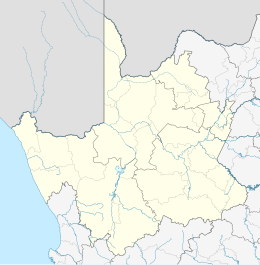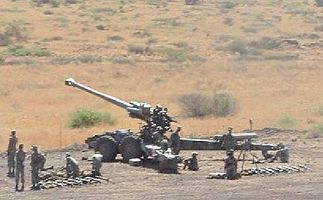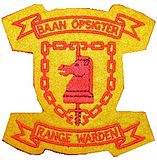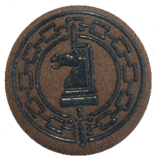
The South African Army is the principal land warfare force of South Africa, a part of the South African National Defence Force (SANDF), along with the South African Air Force, South African Navy and South African Military Health Service. The Army is commanded by the Chief of the Army, who is subordinate to the Chief of the SANDF.

The South African Military Health Service is the branch of the South African National Defence Force responsible for medical facilities and the training and deployment of all medical personnel within the force. Though unusual, as most national militaries integrate their medical structures into their existing service branches, the SANDF regards this structure as being the most efficient method of providing care and support to the SANDF's personnel.

The South West Africa Territorial Force (SWATF) was an auxiliary arm of the South African Defence Force (SADF) and comprised the armed forces of South West Africa from 1977 to 1989. It emerged as a product of South Africa's political control of the territory which was granted to the former as a League of Nations mandate following World War I.
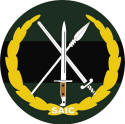
The South African Army Infantry Formation supervises all infantry within the South African Army.
Operation Moduler was a military operation by the South African Defence Force (SADF) during the South African Border War. It formed part of what has come to be called the Battle of Cuito Cuanavale. The Angolan objective was to advance south-east to attack the UNITA at Mavinga. The SADF objective was to protect UNITA by stopping that advance. The advance was halted with heavy Angolan casualties. The South African forces and its UNITA allies then began offensive operations against the Angolan forces, who had retreated back to a defensive line east of the Cuito River with the objective of destroying them once and for all.
Operation Prone was a proposed military operation by the South African Defence Force (SADF) and South West African Territorial Force (SWATF) during the South African Border War and Angolan Civil War between May and September 1988. With the advance of the 50th Cuban Division towards Calueque and the South-West Africa border, the SADF formed the 10 SA Division to counter this threat. The plan for Operation Prone had two phases. Operation Linger was to be a counterinsurgency phase and Operation Pact a conventional phase.
Operation Sceptic was the largest anti-South West Africa People's Organization (SWAPO) sweep during the South African Border War up to that point. The operation was also known as Smokeshell though this was the codename for the People's Liberation Army of Namibia (PLAN) base which was the main focus of the attack. This operation followed Operation Safraan and preceded Operation Klipklop.

1 South African Infantry Battalion is a mechanized infantry unit of the South African Army.
Lieutenant General Vusumuzi Masondo is a South African military commander.

4 South African Infantry Battalion is a motorised infantry unit of the South African Army.
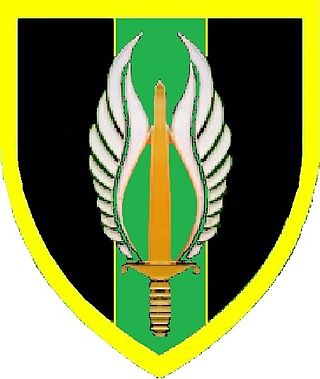
The Job Masego Regiment is a reserve mechanised infantry regiment of the South African Army.
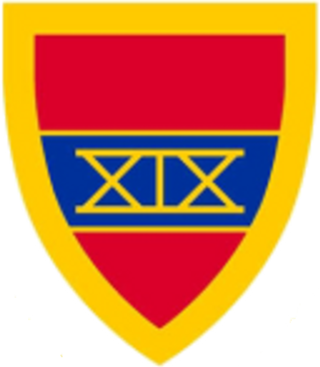
The Umkhonto Field Engineer Regiment is a regiment of the South African Army Engineer Formation. The unit is based in Durban with the HQ being at Old Fort Military Base, Lord's Grounds. As a reserve unit, it has a status roughly equivalent to that of a British Army Reserve or United States Army National Guard unit.

8 South African Infantry Battalion is a mechanized infantry unit of the South African Army. The battalion is equipped with Ratel Infantry Fighting Vehicles (IFV) used for fast transport and combat mobility across rough ground. Support weapons for mechanized infantry are also provided with motorized transport, or are built directly into these IFVs, in order to keep pace with the IFVs in combat. The battalion was raised at Upington in the Northern Cape in 1973 as part of the South African Infantry Corps, and since the change in structure, has been assigned to the Infantry Formation.

7 South African Infantry Division was a formation of the South African Army, active from the 1960s to 1999.

6 Medical Battalion Group is a Medical Battalion in the South African Military Health Service (SAMHS). SAMHS is the fourth Arm of Service of the South African National Defence Force (SANDF).
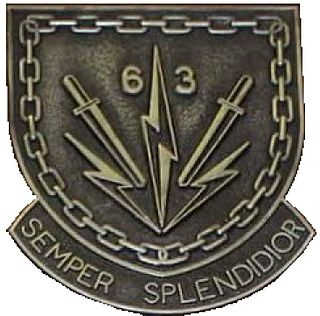
63 Mechanised Battalion Group was a unit of the South African Infantry Corps; although it was classed as mechanized infantry, it was a combined arms force consisting of infantry, armour and artillery. Together with 61 Mechanised Battalion Group and 62 Mechanised Battalion Group, these units made up 60 Brigade encompassing battlegroup principles.

62 Mechanised Infantry Battalion Group was a unit of the South African Army (SADF); although it was classed as mechanized infantry, it was a combined arms force consisting of a Mechanised Infantry Battalion forming the core of the group, Main Battle Tank Squadron, Armoured Car Squadron, Air-defence Battery, Engineer Squadron, Artillery Battery, specialists i.e. EW, MAOT, etc. and all the supporting staff and functions required for such a force.

9 South African Infantry Division was a formation of the South African Army, active in the early 1990s.

81 Armoured Brigade was a Formation of 8th Armoured Division, a combined arms force consisting of armour, mechanised infantry, and mechanised artillery.

South West Africa Command was a command of the South African Army.

